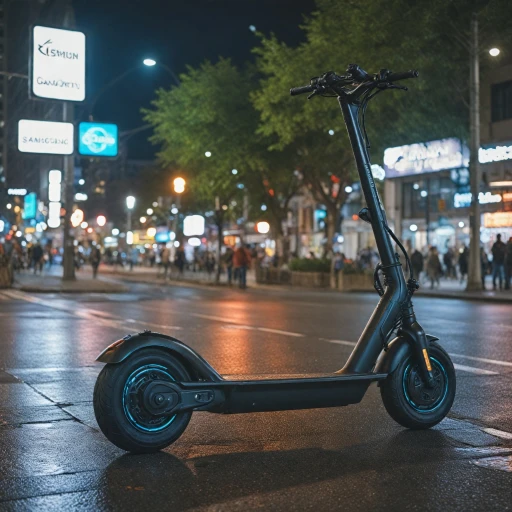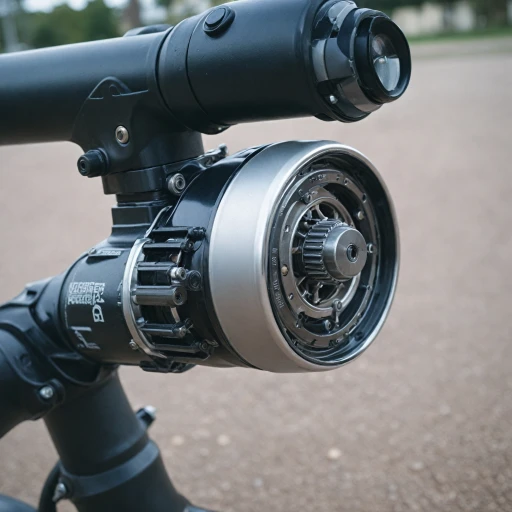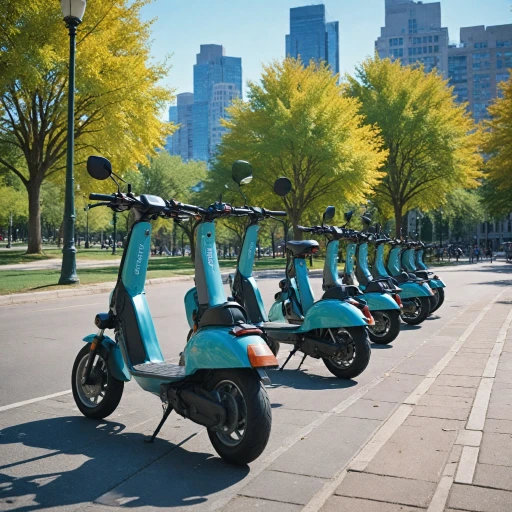The Basics of Electric Scooter Motors
Introduction to Electric Scooter Motors
The heart of any electric scooter is its motor. It provides the power and performance that riders demand, influencing aspects such as speed and durability. When considering electric scooters, the motor is a crucial component that can vary significantly in terms of power (wattage), type, and efficiency.
Electric scooter motors generally come in two primary forms: brushed and brushless. These types affect both the performance and the unit price of the scooter. A brushless motor, for instance, often offers smoother operation and requires less maintenance compared to its brushed counterpart, yet it might come at a higher upfront cost. Understanding these different types can help you make an informed decision when purchasing an electric scooter.
When exploring scooter motor characteristics, you will frequently encounter terms such as hub motor. Hub motors are embedded directly within the wheel, offering greater efficiency and reducing the number of moving parts, thus minimizing potential issues. This factor can contribute to the scooter's overall performance and maintenance needs.
Factors like volt and watt specifications, price, and installation ease (especially with kits offering free shipping) are critical considerations as well. Finding the best balance of these factors according to your needs is key to ensuring that you are getting value both in terms of performance and price.
Additionally, it is essential to understand the impact of motor location—whether it's a front motor or rear motor—as it affects traction and control. As detailed further in this guide, understanding the role of thumb throttle can also provide more nuanced insights into how motor performance plays out in real-world riding scenarios.
Ultimately, gaining a foundational understanding of electric scooter motors arms you with the knowledge to navigate the growing marketplace effectively, allowing you to select the best option that aligns with your lifestyle and usage expectations.
Types of Electric Scooter Motors
Varieties of Electric Scooter Powerhouses
Electric scooters, increasingly popular for their eco-friendly commute options, are powered by engines with varied specifications. It's essential to know the types of motors available, as they significantly impact performance, price, and longevity of the scooter.
One prevalent type is the hub motor. These motors, generally located in the wheels of the scooter, offer several benefits:
- Compact design: As the motor is integrated into the wheel, it minimizes space, allowing for sleeker designs.
- Low maintenance: With fewer moving parts, hub motors require less upkeep, making them a favorite among scooter enthusiasts.
- Whisper-quiet operation: Thanks to the omission of traditional, noisier gears.
Another popular variant is the brushless motor, often used in performance-focused scooters. Here's why they are in demand:
- Efficiency: Without brushes, there's less friction, leading to greater efficiency.
- Longevity: Their design helps prolong the motor's lifespan, though they often come at a higher price point.
- Power output: Often more powerful, they allow electric scooters to reach higher speeds, making up to 20 mph achievable.
The design choice between hub and brushless motors also impacts the scooter's power ratings. Wattage, ranging from 250 to over 1000 watts for high-performance units, often determines the potential speed and climbing ability of the scooter. The voltage of the motor, often around 36 to 48 volts in consumer models, also dictates power delivery and efficiency.
Remember that while high watt motors offer more power, they can also drive up the unit price. On the other hand, more affordable models may offer less power but can be ideal for price-sensitive buyers. Additionally, scooters on sale or those provided with free shipping can often provide the best value.
Performance Factors of Electric Scooter Motors
Evaluating the Performance Parameters of Electric Scooter Motors
When delving into the world of electric scooters, understanding how performance is influenced by the motor's attributes is crucial. The power of your electric motor, denoted in watts, directly affects the scooter's ability to efficiently traverse different terrains. A 250-watt motor might be sufficient for city commuting, whereas off-road adventures could necessitate a more robust build potentially reaching up to 1000 watts or more.
The type of motor, whether it's a hub motor or a belt-driven variant, plays a significant role in determining overall efficiency. Hub motors are known for their compact nature and minimal maintenance due to fewer moving parts, making them a favorite among manufacturers. Brushless models offer higher durability and efficiency compared to their brushed counterparts.
- Power and Speed: The capability of an electric scooter to reach higher speeds, often measured in miles per hour (mph), is contingent on its power output and the motor's wattage.
- Voltage and Current: Volt motors ensure that your scooter consistently performs by maintaining optimal power transfer, enhancing the ride quality.
- Torque: A higher torque results in better acceleration, especially beneficial when navigating inclines or transporting heavier loads.
The wheel size, ranging typically from 8-12 inches, can further affect the maneuverability and comfort of the ride. Larger wheels offer better stability, which can be an essential factor depending on your riding environment.
Critical attention should also be given to additional aspects like the motor's position. Choosing between a front motor or rear alternative impacts traction and handling. The best choice is often dictated by personal preference and intended use case.
While performance criteria are fundamental, factoring in the price point and whether the unit price includes features like free shipping or if a particular model is on price sale can significantly influence decision-making. Regular maintenance, swapping out spare parts when necessary, and understanding the warranty implications on electric scooter motor kits can extend the longevity of your scooter.
Common Issues with Electric Scooter Motors
Identifying Common Challenges with Electric Scooter Motors
Electric scooter motors, while generally dependable, are not immune to a few recurring problems. These issues can affect the motor’s performance, power output, and even lifespan. Understanding these common challenges is essential for ensuring your scooter remains in optimal operating condition.- Overheating: A common issue, overheating occurs when a motor runs for extended periods or is subjected to excessive loads. The heat can lead to reduced performance or, in extreme cases, permanent damage to the motor.
- Noise and Vibration: Unusual noises or vibrations often indicate problems within the motor or other parts like the wheel or hub. This may be caused by wear and tear or could signal loosened parts that need attention.
- Electrical Failures: Issues with the wiring, battery, or connections can result in power loss or no power at all. Corrosion or improper assembly sometimes causes these failures. Regular checks are advisable to maintain efficiency.
- Wear and Tear: Over time, components like the brushless motors, bearings, or other spare parts might wear down, affecting the performance and requiring regular maintenance or replacement.
- Low Battery Performance: Volt motors may perform poorly if they don’t receive adequate power supply, often due to a depleted or faulty battery, impacting the peak performance like maximum mph capacity.
Maintaining Your Electric Scooter Motor
Keeping Your Electric Scooter Motor in Top Shape
Maintaining your electric scooter motor is crucial to ensure its longevity and top-notch performance. Here’s a guide to help you keep your electric motors running smoothly:- Regular Inspections: Routine checks can help spot issues early. Inspect the motor, hub, and wheel connections for any loose wires or visible wear. If you spot any damage, consider checking with the manufacturer for spare parts, which often come with free shipping.
- Cleaning and Lubrication: Dirt and debris can accumulate in the motor parts, particularly in the brushless hubs, affecting performance. Gently clean the exterior and apply appropriate lubrication if needed (refer to the manual for specifics).
- Keep an Eye on the Battery: The performance of the volt motors and watt motors is tightly linked to the battery condition. Regularly check the battery for optimal voltage levels, charging habits, and contact points.
- Climate Considerations: Electric scooters can handle a range of conditions, but exposure to extreme temperatures can take a toll on components like the power unit and hub motors. Store your scooter in a moderate climate when not in use.
- Professional Servicing: For issues beyond basic maintenance, such as problems with the brushless motor or watt motor, consult a professional. Some manufacturers offer service plans with free or discounted shipping of necessary parts.





